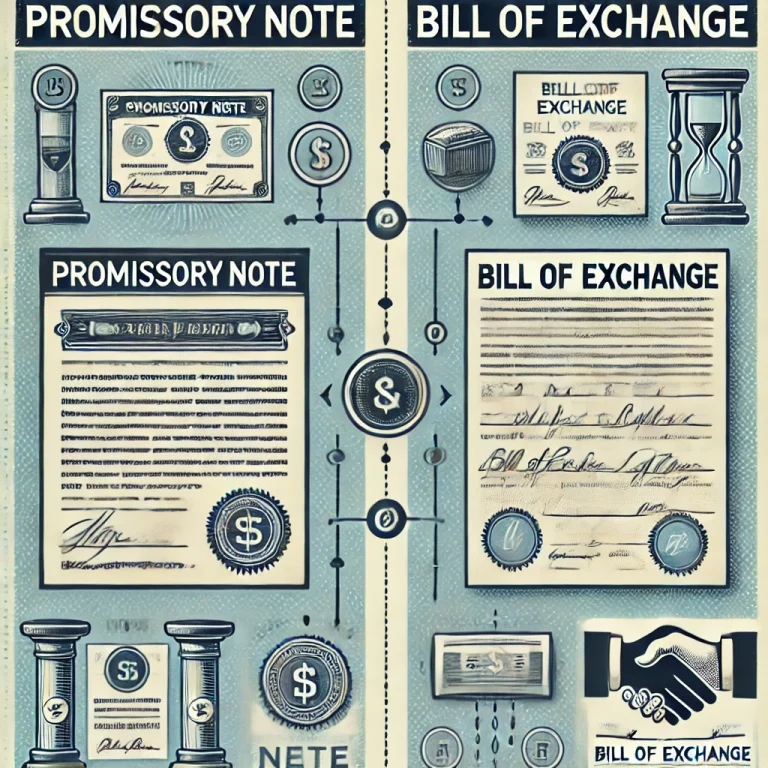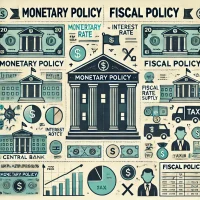Commercial documents in the business exchange world can be vital because they act as the legal form binding parties while negotiating over such credit. Bills of exchange and promissory notes are legal and two unique documents; one has to provide certain services while the other deals in an exchange with both money. This article differentiates between a bill of exchange and a promissory note, including the differences in characteristics, parties, and legal implications of these instruments.
Promissory Note vs Bill of Exchange
Both are negotiable instruments that facilitate trade and commerce, but they have distinct features and purposes. You write a bill of exchange as a written order to a debtor to pay a certain amount at a specified time or on demand. You write a promissory note as a written promise to a creditor to pay a certain amount at a specified time or on demand. For a better understanding, let’s explore the difference between promissory notes and bills of exchange in tabular format. Here’s the table:
| Feature | Promissory Note | Bill of Exchange |
|---|---|---|
| Definition | A written promise by one party to pay a certain amount of money to another party. | A written order by one party directing another party to pay a specific amount to a third party. |
| Parties Involved | Involves two parties: the maker (issuer) and the payee. | Involves three parties: the drawer, the drawee, and the payee. |
| Acceptance Requirement | Does not require acceptance by the payee. | Requires acceptance by the drawee. |
| Legal Obligation | The maker is legally bound to pay. | The drawee is legally obligated to pay upon acceptance. |
| Usage | Commonly used in loans and personal credit transactions. | Often used in trade transactions to facilitate credit. |
| Negotiability | Less negotiable, as it is usually made to a single party. | More negotiable, can be transferred to different parties. |
What is Promissory Note?
A promissory note is that monetary instrument wherein the maker, in writing, promises to pay at a specified date or on demand a certain sum of money payable to the payee. They are generally used in loan transactions wherein one of the parties requires borrowing funds or credit. They thus become legally binding and are considered proof of the debt between the two parties.
Key Characteristics of a Promissory Note
- Two parties involved: The maker (the person promising payment) and the payee (the person receiving the payment).
- Written promise: Clearly states the amount, due date, and the terms of repayment.
- No acceptance required: As a direct promise to pay, it does not require acceptance from the payee.
- Legal obligation: The maker is liable to pay the specified amount on the due date.
Example of a Promissory Note
Imagine a scenario where Person A borrows $1,000 from Person B. Person A then writes a promissory note stating, “I, Person A, promise to pay Person B the sum of $1,000 on [date].” This document legally binds Person A to repay the loan to Person B by the specified date. Thereby, creating a direct, enforceable obligation.
What is Bill of Exchange?
A bill of exchange is a written order created by the drawer upon the drawee directing him to pay to the order of payee the amount of money so expressed thereon. It is used almost everywhere for business transactions while giving out credit and confirming payment. On acceptance, there is a legally binding obligation on the drawee to deliver the payable amount to the payee.
Key Characteristics of a Bill of Exchange
- Three parties involved: The drawer (who issues the bill), the drawee (who is directed to pay), and the payee (who will receive the payment).
- Acceptance required: The drawee must accept the bill to become liable for payment.
- Negotiability: Bills of exchange can be easily transferred and endorsed to other parties, making them more negotiable.
- Legal obligation: Once accepted, the drawee is legally bound to pay the specified amount.
Example of a Bill of Exchange
In a business scenario, Supplier A (drawer) supplies goods to Buyer B (drawee). Supplier A then issues a bill of exchange to Buyer B for payment within 60 days. Buyer B accepts the bill, thereby agreeing to pay the specified amount to Supplier A (or another payee) at the end of the 60 days.
Conclusion
Bottom line: a bill of exchange and a promissory note differ in form, parties involved, and functionality in a finance transaction. Promissory notes are direct promises mainly between the maker and the payee, who employs lending or credit. Bills of exchange, however, are orders that must be accepted by the drawee. Thus making them more common in trade transactions where they help to have a smooth credit flow. Both instruments have different legal implications, and it is therefore important to understand their differences for effective financial management.
Bill of Exchange and Promissory Note FAQs
What are the three parties involved in a bill of exchange?
A bill of exchange involves the drawer (who issues the bill), the drawee (who is directed to pay), and the payee (who will receive the payment).
Can a promissory note be used in trade transactions?
Yes, while promissory notes are less common in trade than bills of exchange, they can still be used for personal or business loans where direct payment is promised.
Is acceptance required for a promissory note?
No, a promissory note does not require acceptance from the payee as it is a direct promise from the maker to pay.
How is negotiability different between bills of exchange and promissory notes?
Bills of exchange are more negotiable as they can be transferred through endorsement to multiple parties, whereas promissory notes are typically non-negotiable and involve only the maker and the payee.
Which instrument is more commonly used in trade transactions?
Bills of exchange are more commonly used in trade transactions to facilitate credit and ensure payment between parties.


